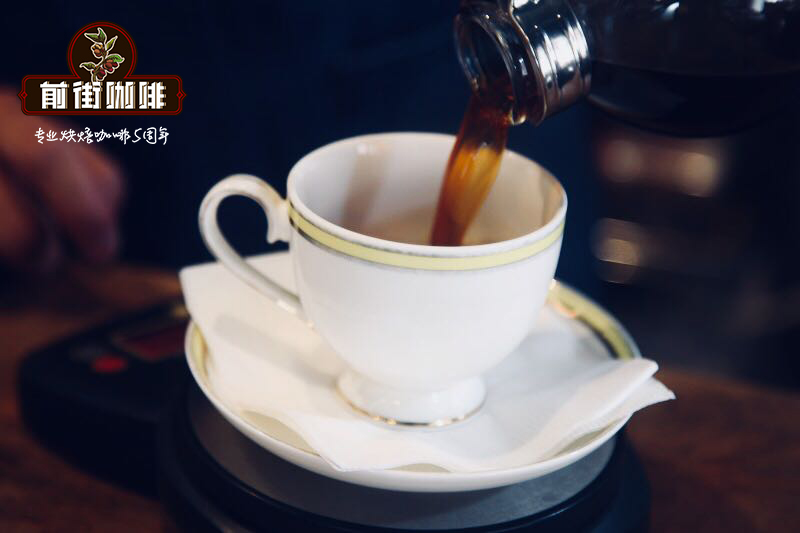Bolivia La Paz La Paz Coffee region introduces the taste of Bolivian specialty coffee beans

Professional coffee knowledge exchange more coffee bean information please follow the coffee workshop (Wechat official account cafe_style)
Bolivian coffee production is dominated by a smallholder production system, with 23000 small farms ranging in size from 2 to 9 hectares, and in particular, about 40 per cent of Bolivian coffee culture is mainly sold domestically. The main varieties are Arabica, such as Iron pickup, Kaddura, Cleo, Kaduai and Kadiwen. The production season is from July to November, most of them are washed coffee beans, only some of them are sun-treated.
Almost all the plants in Bolivia are planted organically (we have imported organic Bolivia a few years ago, so it is easy to cook, so the wind review is very good), which is supposed to be the focus of the next slope of boutique development.
Bolivia is such a potential producing area, but it is only a small coffee export area, accounting for less than 0.1% of global output. Why?
However, Bolivian production has declined year by year in recent years. From 1997 to 2014, the export volume dropped to only 1 stroke 4 every year. According to Roast Magazine, its coffee production ranked 38th and even lagged behind the United States, which ranked 35th.
The main reason is Bolivia's backward economic development and infrastructure. Bolivia is still the poorest country in South America. Although Bolivia's unique changeable terrain is beneficial to the growth of coffee, poverty and poor infrastructure are key factors in coffee processing, transportation and quality.
The most famous producing area in Bolivia is La Paz, including Caravani, North & South Yongas, Inquisivi and so on. The region is most famous for one of the most dangerous roads in the world, nicknamed Yongas Road, also known as "the most dangerous road in the world".
To the north of Yonggaz Road, there is a sharp drop of at least 600m (1830 feet), most of which is no more than 3.2m (10ft) of single-lane width, and there is no guardrail along the road, making the road very dangerous.
When it is not 05:00, Rain Water, fog and dust will also reduce the visibility of driving. On some sections of the road, the road is very muddy, and from time to time there are loose falling rocks, which can accidentally run out of control and rush down the valley. According to official statistics, there are an average of about 209 traffic accidents on Yongjas Road each year, resulting in 96 deaths.
In such a dangerous road, it is no wonder that it is not easy for Bolivia to export coffee beans, and it is also difficult for the outside world to obtain. Heavenly delicacy can only be delivered to the buyers of boutique coffee by the road of death, so fine micro-batches of Bolivian coffee can be said to be very precious and hard to find.
Even if the environment is so suitable for the development of coffee beans, poor infrastructure has become the biggest obstacle to coffee processing, transportation and export, so the output is far lower than that of other coffee boutique countries. Every time I get Bolivian beans, they are very precious.
Although Bolivian coffee has a small share and low popularity, Bolivian coffee beans are almost sweet, with floral, creamy and chocolate rhymes, which almost everyone will like, the flavor is very direct and easy to understand, and has great potential to grow amazing varieties.
Important Notice :
前街咖啡 FrontStreet Coffee has moved to new addredd:
FrontStreet Coffee Address: 315,Donghua East Road,GuangZhou
Tel:020 38364473
- Prev

Introduction to the Flavor characteristics of Rose Summer Coffee in Oroma Manor, Panama
Professional coffee knowledge exchange more coffee bean information please follow the coffee workshop (Wechat official account cafe_style) Panama Oroma Manor Rose Summer Sun [Colonna] Panama Auromar Geisha natural producer: Panama Panama Bean seed: Rosa Geisha production area: Chiriki Chiriqu;Piedra Candela/Volcan Manor: Orlo
- Next

Taste of Bolivian coffee beans CaranaviKara Nano Irupana Illupana Coffee producing area
Professional coffee knowledge exchange more coffee bean information Please pay attention to Coffee Workshop (Wechat official account cafe_style) Irupana is a town in Karana province, Bolivia, with a variety of natural landscapes, rich animal and plant ecology, and has unlimited potential in eco-tourism. Tiberia is also a tropical rainforest belt and has become the Amazon region.
Related
- Detailed explanation of Jadeite planting Land in Panamanian Jadeite Manor introduction to the grading system of Jadeite competitive bidding, Red bid, Green bid and Rose Summer
- Story of Coffee planting in Brenka region of Costa Rica Stonehenge Manor anaerobic heavy honey treatment of flavor mouth
- What's on the barrel of Blue Mountain Coffee beans?
- Can American coffee also pull flowers? How to use hot American style to pull out a good-looking pattern?
- Can you make a cold extract with coffee beans? What is the right proportion for cold-extracted coffee formula?
- Indonesian PWN Gold Mandrine Coffee Origin Features Flavor How to Chong? Mandolin coffee is American.
- A brief introduction to the flavor characteristics of Brazilian yellow bourbon coffee beans
- What is the effect of different water quality on the flavor of cold-extracted coffee? What kind of water is best for brewing coffee?
- Why do you think of Rose Summer whenever you mention Panamanian coffee?
- Introduction to the characteristics of authentic blue mountain coffee bean producing areas? What is the CIB Coffee Authority in Jamaica?

